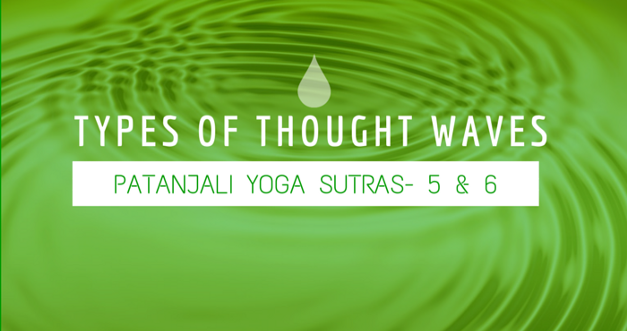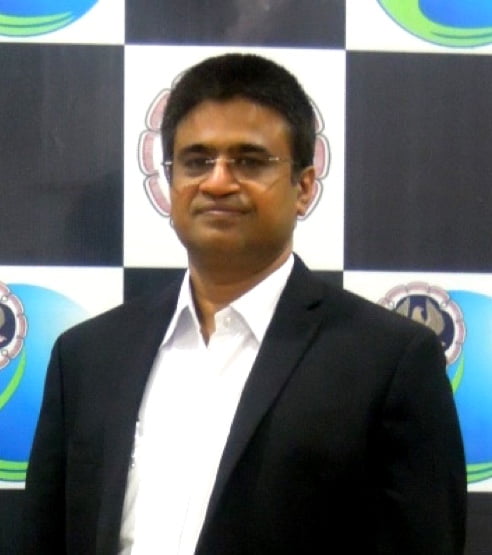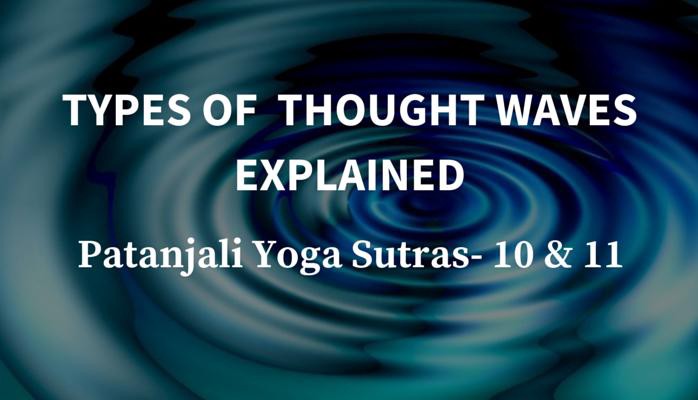Till now it has been discussed how a person should exercise stringent control over his thought waves. Controlling or regulating one’s thought waves helps to maintain the “Yogic State” as a way of life.
Moving forward, the next Yoga Sutras explain various types of thought waves, their nature and classifications. The thought waves keep crisscrossing in the mind of every individual. Thoughts keep coming endlessly without a break or pause. The classification of thought waves by itself is very complicated. The below facts about the thought waves are worth considering:
- Thoughts are formed at a speed beyond current scientific units of measurement.
- Thoughts keep coming on a continuous basis as long as we are alive.
- All people from different demographics, age groups and cultures have thoughts.
- Complete absence of thoughts is also a negative state. It is a problem or Vritti.
In order to maintain the “Yogic State”, it is essential to understand the concept of thought waves. Understanding one’s thought patterns helps a person to regulate and control his thoughts.
Creating a classification of a million type of thoughts that a billion people can have is a daunting task. This has been explained very vividly in these two aphorisms.
What a person thinks and why he thinks so, has been a primary area of research in the modern science. In the last few decades, many startling discoveries have been made in the functioning of the brain. I would like to share a few facts and latest these discoveries here:
- The size of a human brain is bigger than the brain of a Whale and a Gorilla.
- “Although the brain accounts for less than 2 % of a person’s body weight, it consumes 20 % of the body’s energy.
- In these two TED talks doctors explains how the thought process works in the human brain:
वृत्तयः पञ्चतय्यः क्लिष्टा अक्लिष्टाः॥५॥
Vṛttayaḥ pañcatayyaḥ kliṣṭā akliṣṭāḥ||5||
1.5. The problematic thought streams are of five types, both painful and not painful.
Most of the available ancient scriptures and texts are indicative and suggestive, showing possible conditions. The same is the case with Patanjali Yoga Sutras. These Sutras are meant to ignite the thinking process of an individual in order to improve the understanding of Yoga.
The classification of thoughts in Yoga Sutras has an inclusive and exhaustive annotation. This classification helps a person to understand the concept of thoughts. It also helps in understanding the reasons for the formation of thoughts. This is the basic principle for a person who is a beginner and wants to adopt Yogic State as a way of life. It is important for him to understand his thought patterns and the types of thoughts that come to him.
Primarily, there are two main types of thought waves, “Painful thought waves and Others” as said in the Sutra. In Sanskrit, there is a prefix: “अ”. Adding this prefix to a word changes the meaning of the word into its opposite or antonym.
So there are painful thought waves and other thought waves. These other thought waves are opposite of painful thought waves and include all the remaining types of thought waves. This makes the Sutra exhaustive and at the same time inclusive by including all the types of thought waves.
Secondly, the thoughts can belong to any of the five types as mentioned in the below Sutra. The classification of thoughts has been done very scientifically in these Sutras in order to cover all sorts of thought activity. During the ancient times, there was no FMRI Imaging. People did not know how the brain functions the way we know it now. It is really amazing to note how such a practical classification of thoughts was possible during those days.
प्रमाणविपर्ययविकल्पनिद्रास्मृतयः॥६॥
Pramāṇaviparyayavikalpanidrāsmṛtayaḥ||6||
1.6. Affirmative and Conclusive, Uncertain, Hazy and Vague, Alternative or False Notions, Blank Mind as in Sleep and, Memory — Thoughts of Past events or Imaginations.
All across the Internet, there are various websites with literal translations of the Yoga Sutras. All the translations are correct in a literal sense. However, these translations are unable to drive home the full concept of the Sanskrit phrases used in the Sutras. The main objective being to segregate the thoughts, I found the literal translations not doing enough justice to the actual concept of Yoga Sutras. The concept is the important foundation on which the whole science of Yoga stands. So it becomes important to make these translations more comprehensible for a beginner or an average person. I probed further and I have been doing research for a long time now. I am searching for more details about the brain and its working within various ancient scriptures.
I do not agree with those who have a narrow approach and follow the literal translations. Terms like Right knowledge and Wrong knowledge, etc. are not enough to make someone understand the concept of ancient Sutras. I have always tried to get the correct context and and meaning of these phrases. Also, it is for each person to try and make an inclusive understanding of this concept. One can take control of his thought waves by first being able to classify the thoughts. These Sutras are the guiding concept in the same.
At this point, it would suffice to understand that a person needs to have a comprehensive understanding about thoughts that come to his mind. He should realize that these thoughts are there with some inherent manifestation in them. Basically, these thoughts can be painful or otherwise. Every individual is required to self evaluate his thoughts. One should get to the basis and origin of the thoughts for their proper classification.
To get a better idea, let us take and visualize the thought process. We can take example of a very common substance, Water. The following lines will set in motion thoughts about this very common substance.
Water is a compound made up of two atoms of Hydrogen and one atom of Oxygen. Science is ages away from being able to create the water. At different temperatures, water has different states. Water is gas, liquid as well as Solid- Steam, Water and Ice. Water on our planet earth is in a closed system. Water changes its forms and shapes still it remains constant in total quantity. The same quantity of water that existed on earth millions of years ago is still present today. Water dissolves more substances than any other liquid. Wherever it travels, water carries chemicals, minerals, and nutrients with it.
Somewhere between 70 and 75 percent of the earth’s surface is covered with water. But much more fresh water is stored under the ground in aquifers than on the earth’s surface. Drinking too much water too quickly can lead to water intoxication. Water intoxication occurs when water dilutes the sodium level in the bloodstream.
Here in this illustration, you can see examples of different types of thoughts that a person can have about water. The above thoughts about water can be easily classified into different categories, as mentioned in the above Sutra. The categories that these thoughts will be included in are:
Pramana meaning Affirmative and Conclusive.
Viparyaya meaning Uncertain, Hazy and Vague.
Vikalpa meaning Alternative or False Notions.
The other two types of thoughts mentioned in the Sutras will be discussed in later posts:
Nidra meaning mind in the state of sleep- Blank mind.
Smritimeaning memory or thoughts about past events or Imagination.
All thoughts as per Patanjali can be classified into the above five categories.
I think it should take a little practice and it will be easy for you to decide as to which thoughts are Pramana, Viparyaya, Vikalpa, Nidra or Smriti as in the above example. I will discuss more about each thought type in my upcoming posts as the Sutras go into details.



